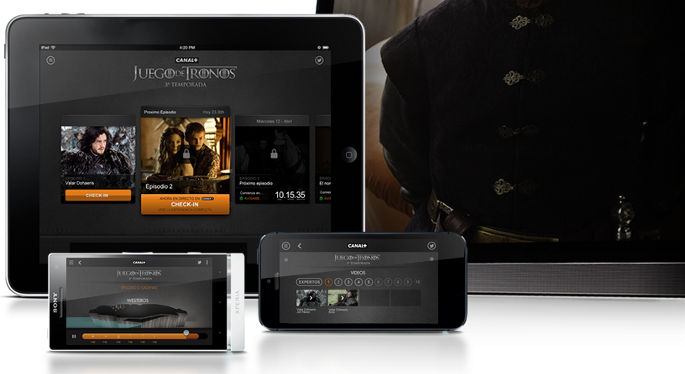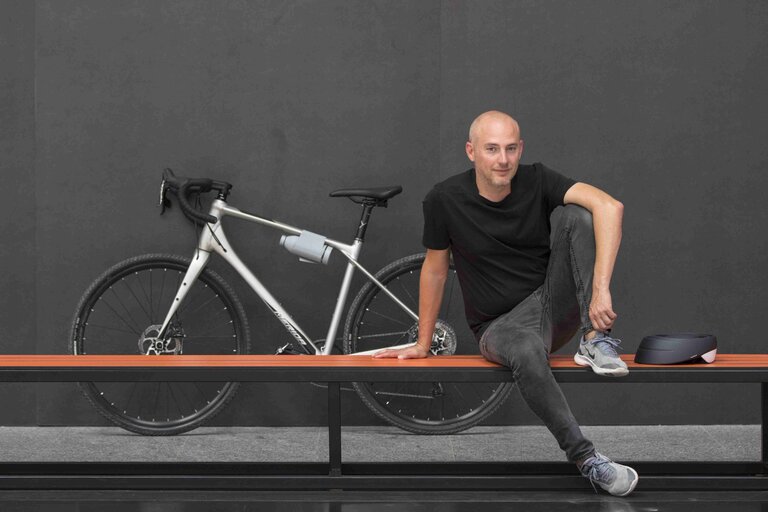The case of the gargantuan media corporation Canal+ is a good example of how gamifying a mobile app development and their contents can be used to promote customer loyalty and to enhance closeness between the company and its customers.
As head of the web and multimedia department in Canal+, Berni Melero found a gap for us in his busy schedule and told us how the company is experiencing the relationship between its customers and the applications that make use of such gamification techniques. In fact, incorporating gamification techniques to its apps is one of the company’s keys to success regarding the use of mobile app development services among its customers.
Fernando Ballester: First of all, Berni, tell us how you would define gamification to someone who has never heard about this technique.
Berni Melero: As I see it, gamification means using recreational dynamics in any type of processes, systems, procedures, fields or areas of collaboration. Depending on who I had to explain it to, I’d choose perhaps easier words such as games, rewards, challenges, competition, entertainment, etc.

FB: Your applications adapt and vary their content… How and in which areas are you applying these techniques in Canal+? What is the purpose behind betting on gamification?
BM: So far, we have applied these techniques to the online communication area, where it’s most effective. We create products and contents that improve the customer’s experience regarding television content and set it beyond mere viewing. They also allow us to promote the content available on the platform. In addition to mobile marketing promotion, the aim of these products is maintaining successful relationships and creating new ones with those users that approach us. In short: to promote customer loyalty. In this sense, gaming dynamics give birth to emotions that have a positive impact on the kind of relationships we are after.
FB: Which tested experiences and formulas have proved successful?
BM: We started using gamification three years ago and have been using different formulas ever since. We’ve promoted challenges, given rewards and created competitions. Just to give a few examples: this year we have launched Oscreator, which works as a quiz related to the films and through which users can obtain items to customise their own Oscar statuette.
Also, ever since we created Fantasy NBA two years ago, we’ve been offering a virtual league in which users choose their own teams, sign up official NBA players, take part in official leagues hand in hand with TV show hosts and collaborators from Canal+, create private leagues to play with their friends and earn awards based on their ranking.
Game of Thrones is a product we’ve really capitalised on and it’s the TV content for which we have developed this kind of dynamics the most. In quantitative terms, the best results obtained so far have been achieved by the second screen application “Vive Poniente”, an app we developed last year. Users, through this application, could enjoy additional live content related to what they were watching on television.
FB: Generally speaking, mobile development is very broad and it’s an emerging market that is growing rapidly. What do you think makes mobile games different from traditional games?
BM: We must take into account that there has been an astounding technological mobile app development. I believe that the basics of the games have remained the same, only that the possibilities are now virtually endless. We’ve currently got users/players with devices in their pockets, 24-hour connectivity, global and powerful real-time interaction… This means that we have in our hands another generation of games: social games.
FB: As a result of all this… How have games and gamified mobile apps benefited from migrating to mobile devices?
BM: First of all in the frequency of use. Currently we all have mobile devices that we always carry around with us, and these are constantly incorporating more and more features. Checking in at a restaurant is now very simple, for instance.
There is still some way to go nevertheless, especially in terms of customisation. Getting a game installed on a mobile device means offering a unique experience to each user.
FB: Speaking of users, which kind of target or target audience is responding best to this technique?
BM: In our case, it depends on the kind of content we create for this marketing campaign. Game of Thrones fans are not the same kind of people than Oscar Awards fans. It’s true that − when developing online products − the turnout from the audience we are addressing is quite high. This audience is aged between 18-34 years, male and female. However, I believe that gamification can be applied to any age group.
FB: In your opinion, who should be applying gamification techniques? Which kind of companies or to which kind of mobile app development projects?
BM: I would like to see it being more widely used in education. I also think that it’s a good technique for managing teams and − in general − for human resources management. And to mention other kind of projects to which it may be applicable, I am helping in the creation of a gamification layer for managing a community of volunteer collaborators in Mozilla Hispano.






